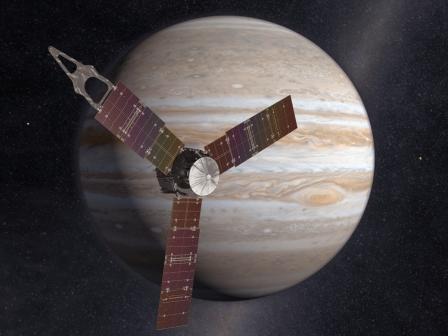Jupiter-orbiting satellite Juno to return to Earth
By Graham Alabdulla, Staff Writer
Jupiter, the largest planet, and gas giant in the solar system is also the fifth planet from the Sun. Due to some of its known properties including its highly radioactive atmosphere and magnetosphere as well as many of its unknown aspects, NASA (National Aeronautics and Space Administration) started planning the satellite Juno to monitor the planet’s atmosphere and other related anomalies in 2011. After spending over four years travelling to the gas giant, it originally entered its atmosphere in early July 2016, after NASA scientists at Jet Propulsion Laboratory (JPL) confirmed its increased engine burn to counteract the planet’s gravity.
Two months ago, NASA scientists decided to decrease the number of planetary orbitals from 30 to 12. The team made this monumental decision after a failed engine burn to increase the speed of Juno so that it would be able to orbit closer to the planet but experience greater radiation from its atmosphere. The team considered trying a second engine burn, but ultimately decided that it would put Juno’s continued mission objectives in jeopardy.
Juno’s orbit will remain at the fifty-three Earth day equivalent, but this path should allow what the scientists are calling “bonus science” to perform longer range scanning of Jupiter’s magnetosphere — which is approximately 20,000 times stronger than Earth’s magnetic field. At the time of this publication, Juno will have spent over five and a half years in space, and will return in 279 days.
Its return to Earth’s atmosphere will most likely disintegrate the satellite to prevent contamination of the Earth, according to the planetary protection policies that NASA has agreed to, as well as the ESA (European Space Administration) and ISSP (International Space Station Program). While this period of orbiting Jupiter seems especially large, this will hopefully allow Juno to capture more of outer space, whose mystery has captivated mankind ever since taking that first look at the ever-present starry sky.

